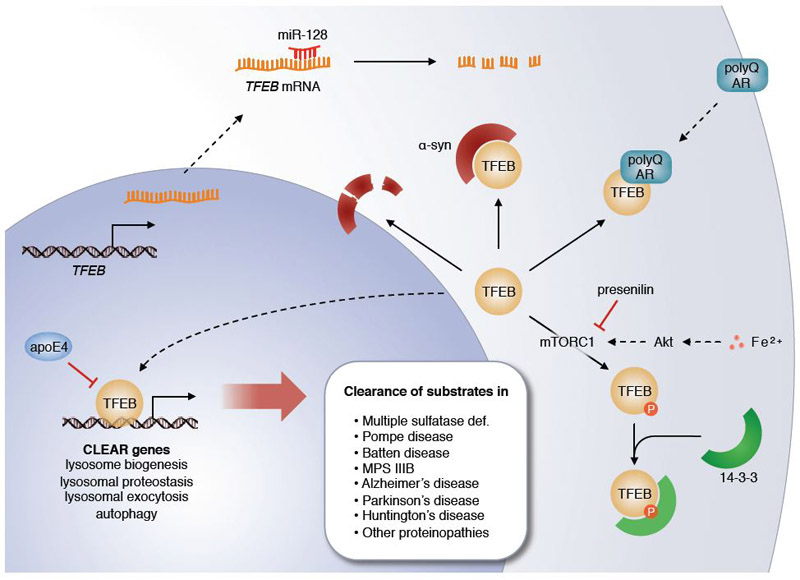Figure 3.

Interplay between TFEB and various molecular pathways in neurodegenerative disease. TFEB binding to CLEAR sites can be outcompeted by apoE4, a protein encoded by the Alzheimer’s disease risk factor APOE ε4 allele. TFEB mRNA levels can be decreased by miR-128, a microRNA that is upregulated in Alzheimer’s disease. Loss of functional presenilin in familial Alzheimer’s disease leads to increased phosphorylation of TFEB by mTORC1 and subsequent cytosolic sequestration by 14–3-3 proteins. Increased TFEB sequestration can also result from increased Akt/mTORC1 pathway activity downstream of iron accumulation. α-synuclein and polyQ-expanded androgen receptor (AR) also can sequester TFEB and decrease its action. Active TFEB promotes various lysosome-based clearance pathways that can counteract pathogenic storage of undegraded molecules in lysosomal storage disorders and proteinopathies.
